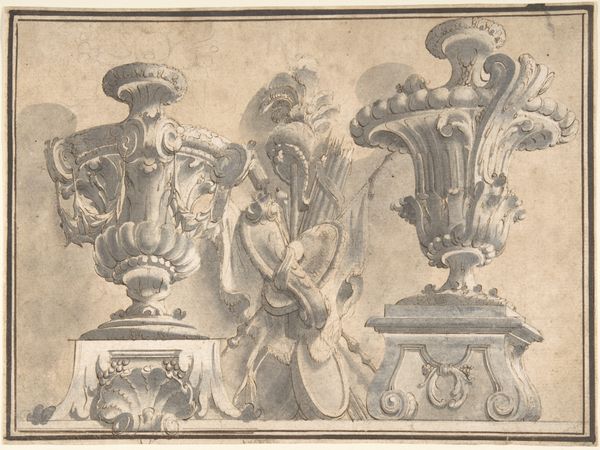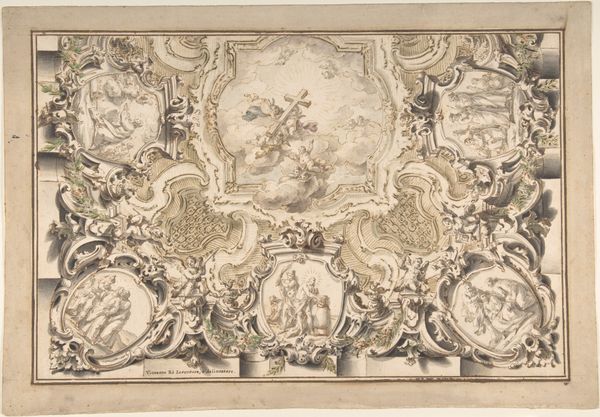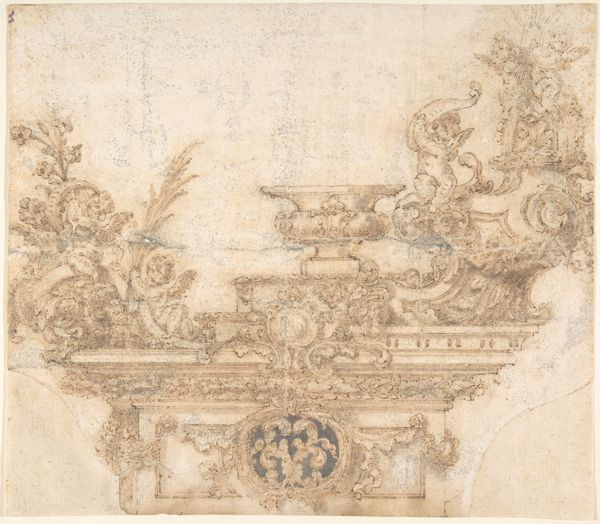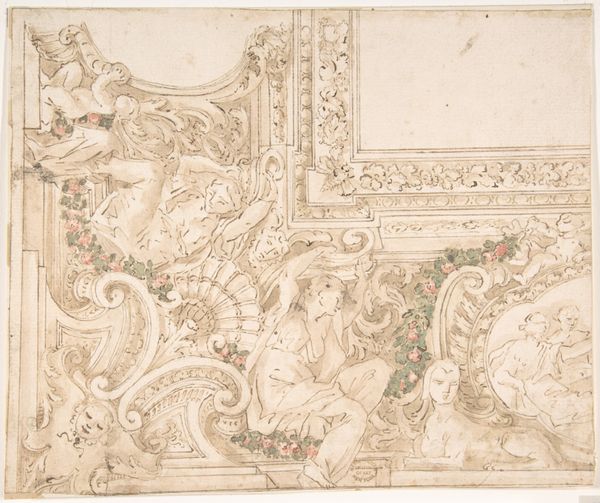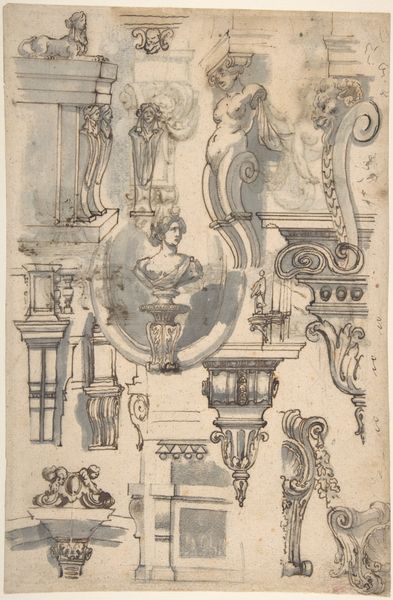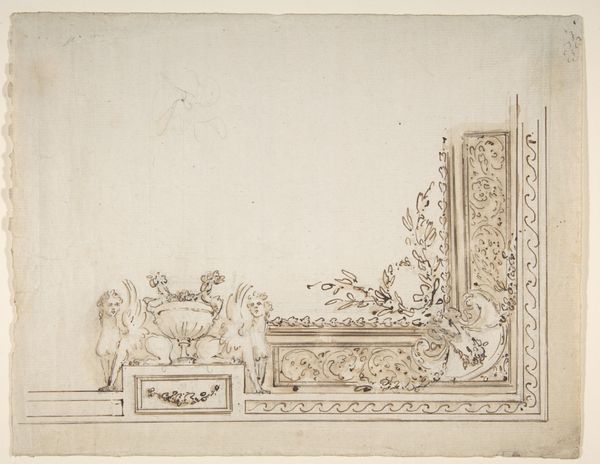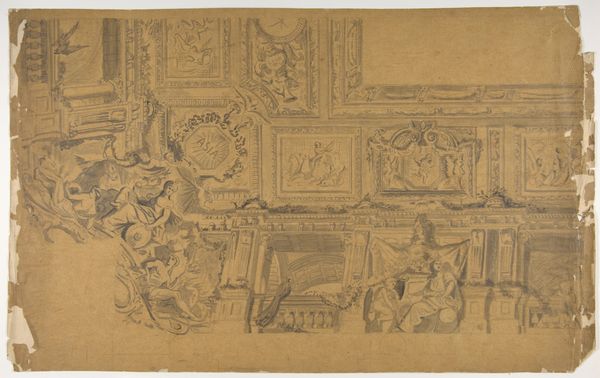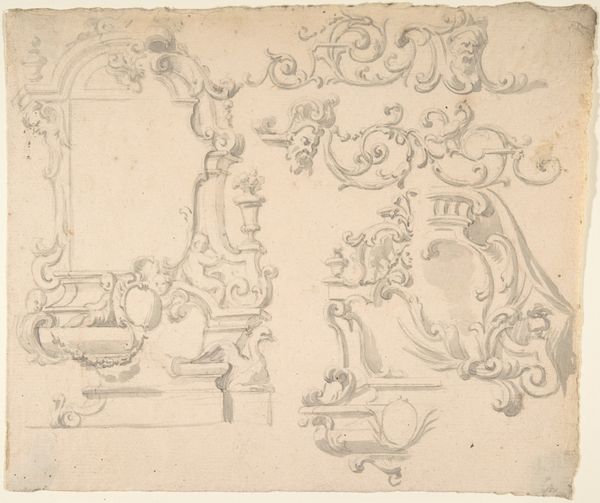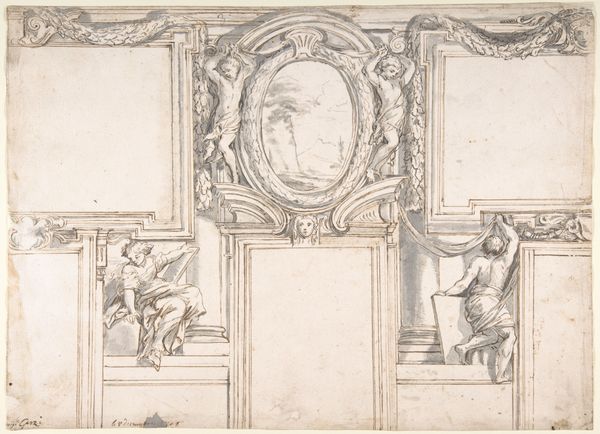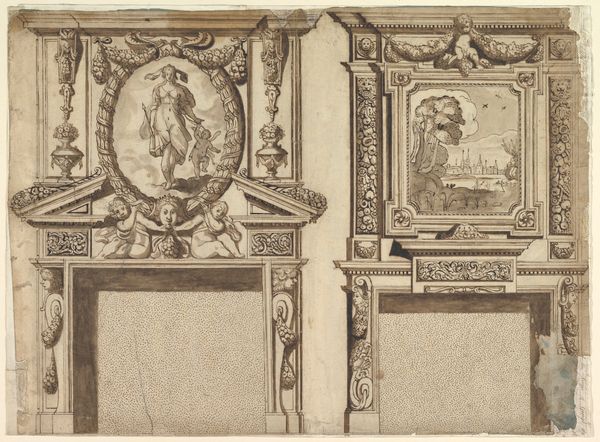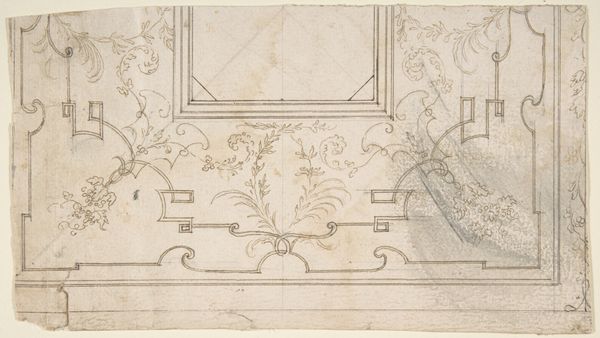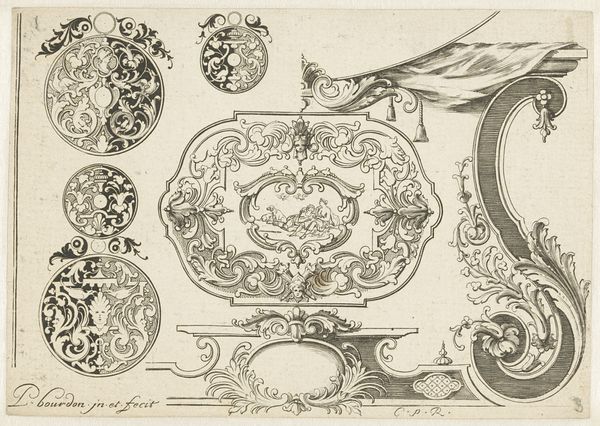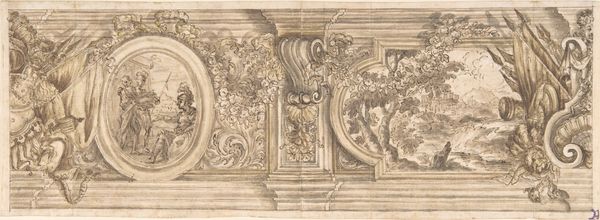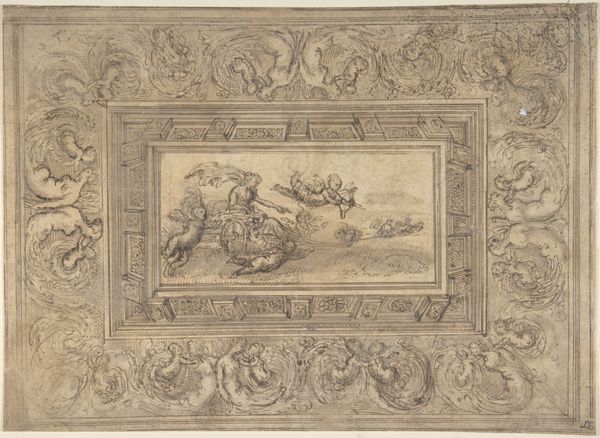
Still Life: Vases, a Cassolette on a Pedestal, and an Overturned Basket of Fruit 1750 - 1821
0:00
0:00
Dimensions: 5 7/8 x 9 1/8 in. (15 x 23.2 cm)
Copyright: Public Domain
Curator: Here we have “Still Life: Vases, a Cassolette on a Pedestal, and an Overturned Basket of Fruit,” created between 1750 and 1821 by Jean Jacques Lagrenée. It resides here at The Metropolitan Museum of Art, rendered in ink on paper. Editor: My initial reaction is a study in contrasts – the crisp lines of the architecture, these precise urn shapes, offset by the more chaotic sprawl of fruit, tumbled from its basket. Curator: Note the geometric clarity and controlled lines. The artist demonstrates a command of perspective and form. Even the draped background is stylized and orderly, each object delineated with precision. The ink wash contributes a sense of depth, drawing the eye to different focal points within the arrangement. Editor: Yet it strikes me that the overturned basket, specifically, might hold deeper symbolic weight. Is this a comment on abundance wasted, or the transience of earthly pleasures perhaps? Consider, also, how fruit historically represents fertility, temptation, even sin. Lagrenée places this powerful symbolism somewhat off-kilter, prompting us to ponder. Curator: Your reading certainly injects a narrative layer. However, from a purely structural point of view, the overturned basket acts as a crucial counterpoint to the verticality of the vases and pedestal, preventing the composition from becoming too static. The curves soften what might otherwise be too severe. Editor: That interplay between the formal and the symbolic is precisely where the work finds its richness, isn’t it? The ordered versus the disordered, the lasting and the fleeting, they’re constantly echoing and amplifying each other. It is not merely the what, but also the how. Curator: Indeed. Examining the drawing solely through a structural lens provides a framework for comprehending the artist's technical skill and aesthetic choices. It grounds interpretation in observable facts, avoiding conjecture. Editor: True, but avoiding interpretation entirely can limit our engagement. We risk overlooking cultural echoes that deepen our appreciation, adding resonance beyond mere technical prowess. Curator: Perhaps. But together, those technical underpinnings and cultural interpretations are necessary to comprehend the artwork and make sense of its artistic choices. Editor: Well said. Lagrenée provides a tableau, ripe for analysis – whether deconstructing its visual architecture, or divining meaning from its aged symbols.
Comments
No comments
Be the first to comment and join the conversation on the ultimate creative platform.
